Abstract
Rabbit tibial nerves were subjected to direct, acute graded compression by means of an inflatable compression chamber. The acute and long term effects of 50, 200 and 400 mmHg applied for two hours on nerve function and nerve fibre structure were investigated. A pressure of 50 mmHg applied for two hours induced only minimal or no acute deterioration of maximal conduction velocity and nerve fibre structure. Conduction velocity was gradually reduced during compression at 200-400 mmHg pressure for two hours and in those cases the recovery of nerve conduction after pressure release was incomplete. Ultrastructural analysis revealed pronounced, early nerve fibre damage in these nerves. Three weeks after compression, nerves compressed at 50 mmHg for two hours had normal afferent and motor conduction velocity, although there were morphological signs of slight nerve fibre damage. Nerves compressed at 200 mmHg for two hours exhibited reduction of conduction velocity only at the level of compression, in contrast to the nerves compressed at 400 mmHg for two hours in which conduction velocity was reduced both at the level of compression and distal to the compressed segment. Morphologically, the nerves compressed at 200-400 mmHg for two hours showed varying degrees of demyelination and axonal degeneration three weeks after compression.
Full text
PDF
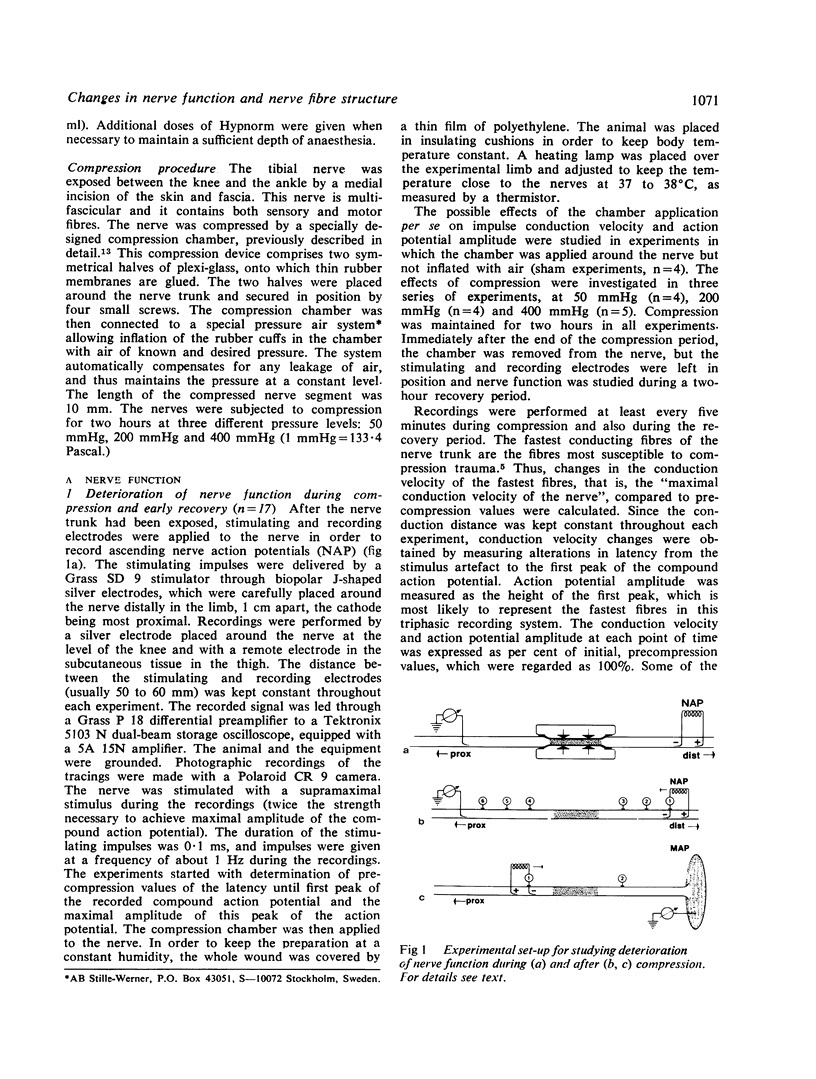
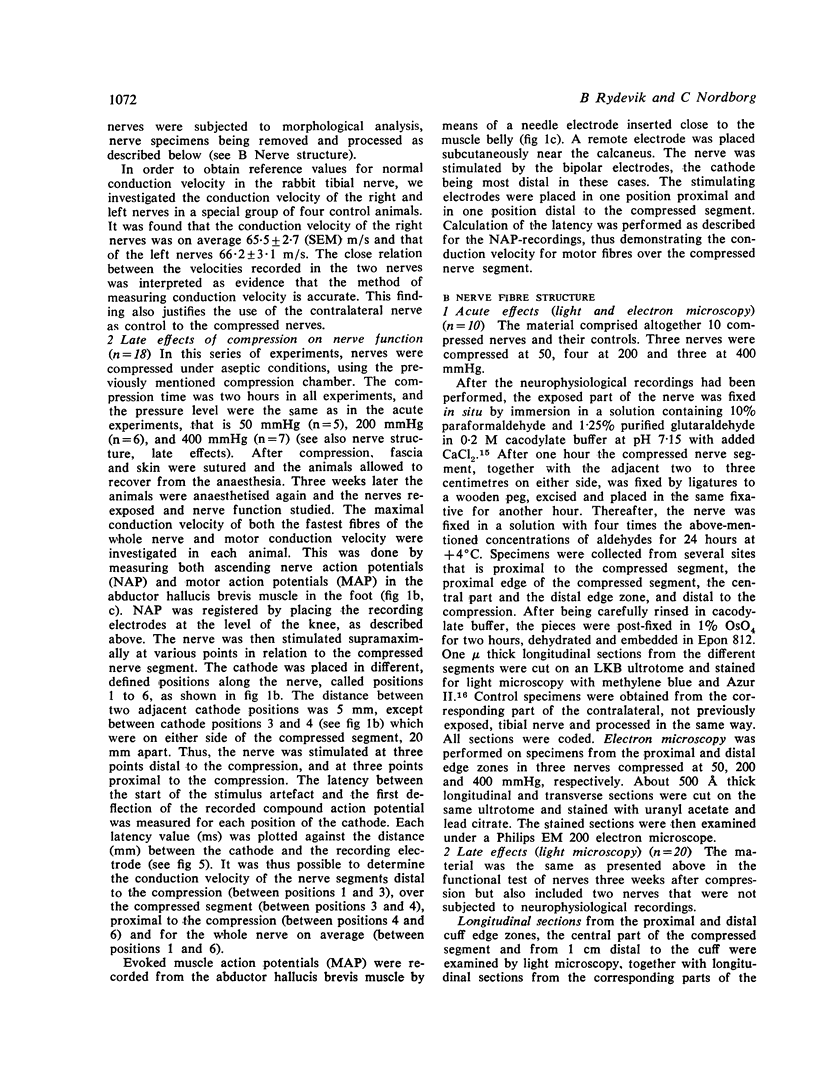
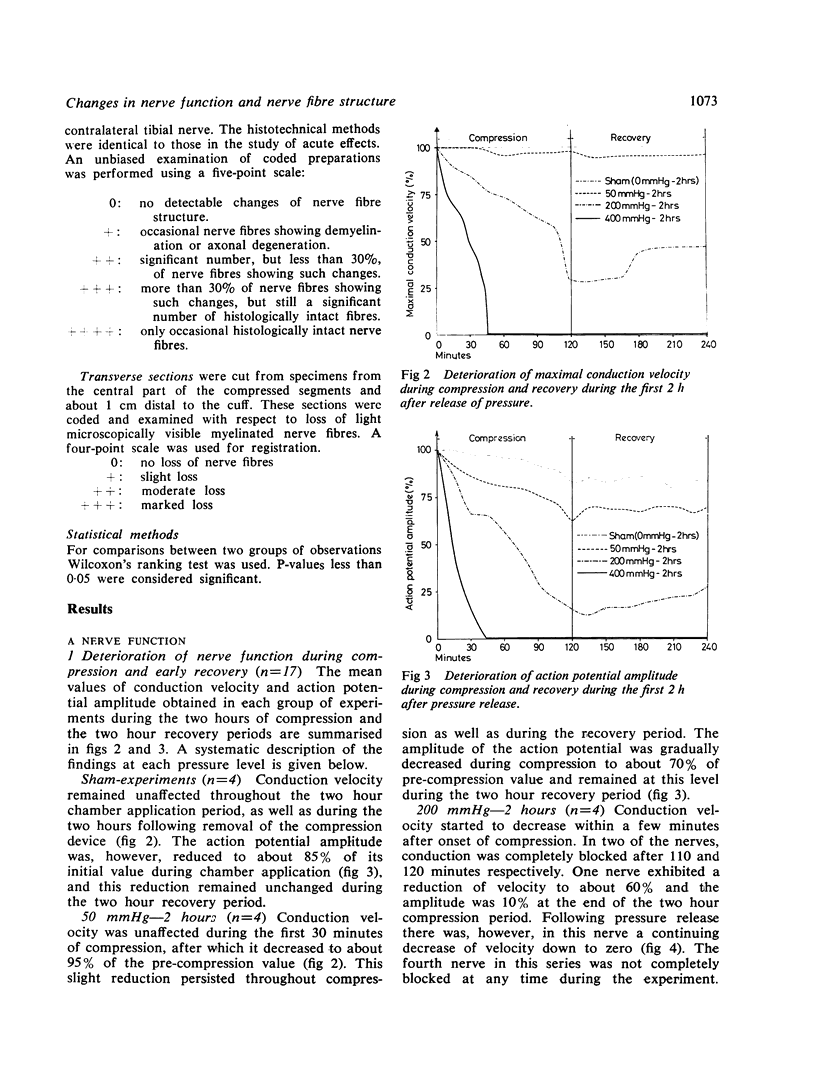


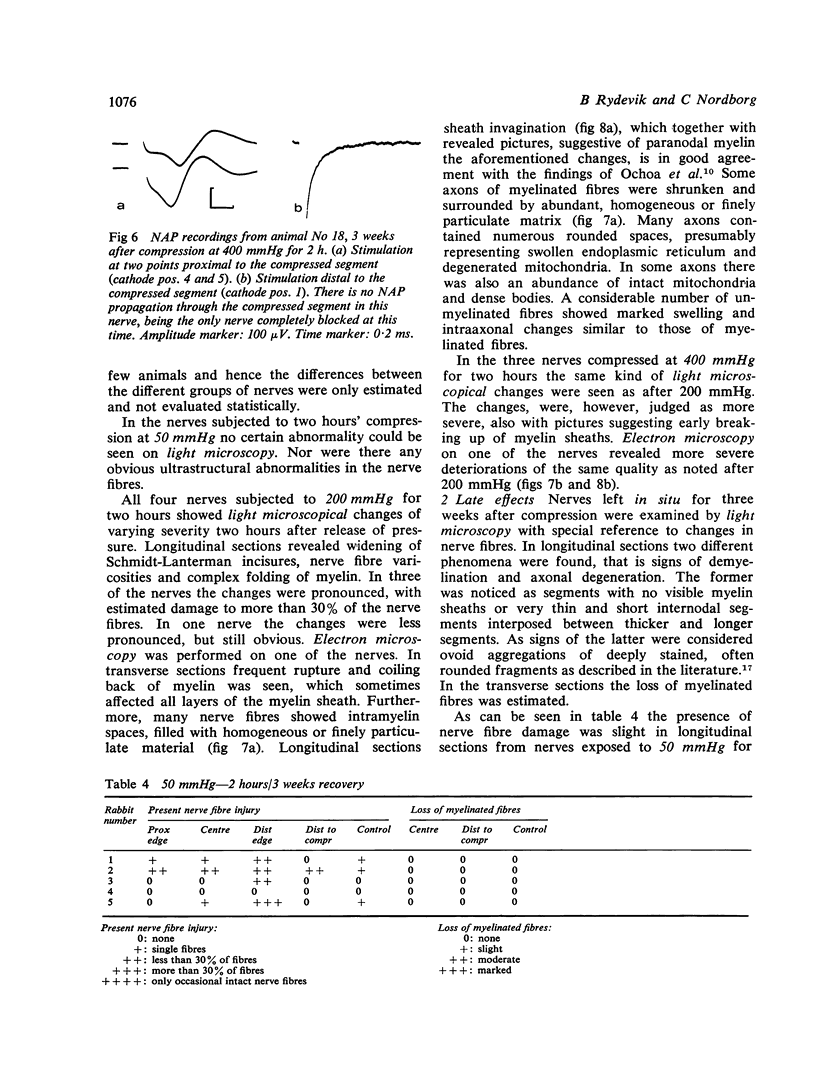

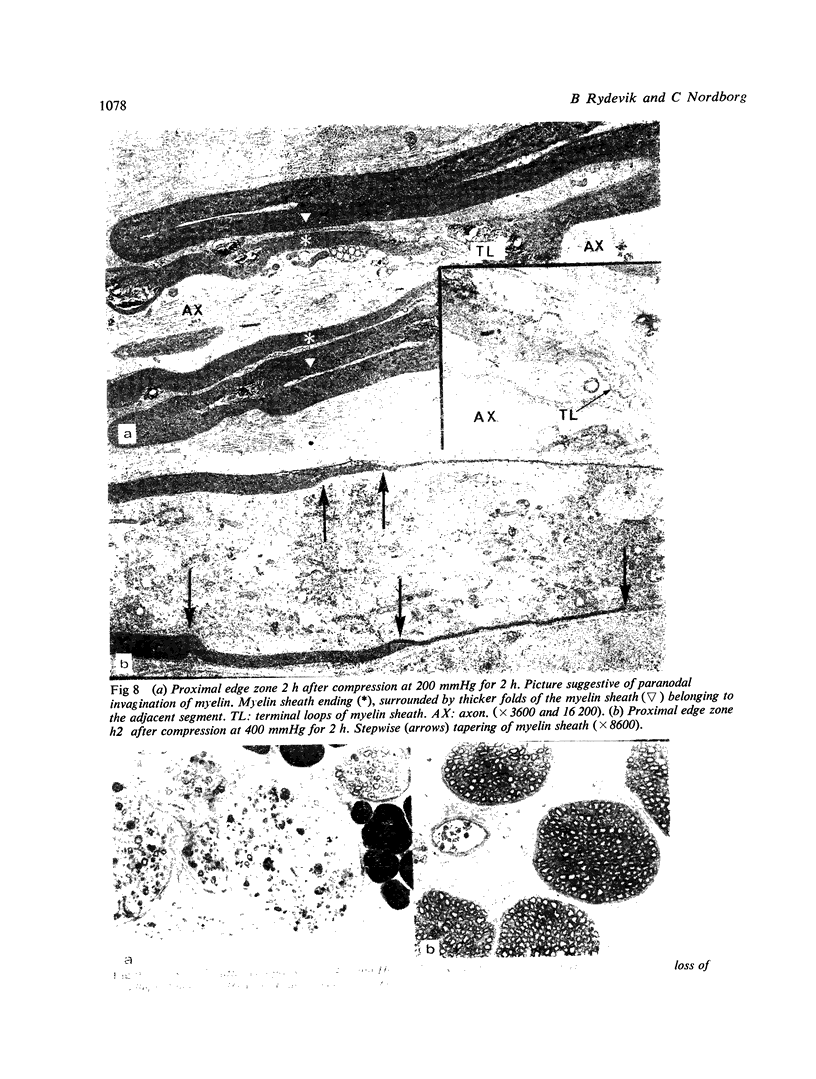



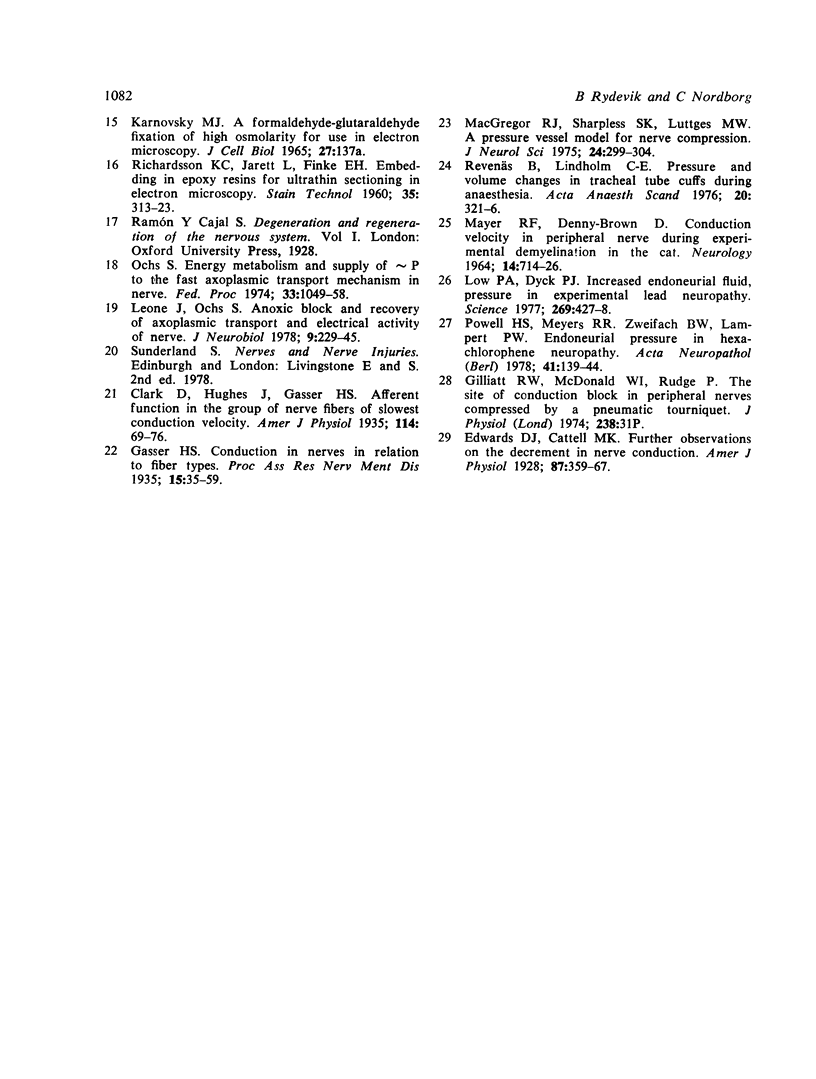
Images in this article
Selected References
These references are in PubMed. This may not be the complete list of references from this article.
- Bentley F. H., Schlapp W. The effects of pressure on conduction in peripheral nerve. J Physiol. 1943 Jun 30;102(1):72–82. doi: 10.1113/jphysiol.1943.sp004016. [DOI] [PMC free article] [PubMed] [Google Scholar]
- Fowler T. J., Danta G., Gilliatt R. W. Recovery of nerve conduction after a pneumatic tourniquet: observations on the hind-limb of the baboon. J Neurol Neurosurg Psychiatry. 1972 Oct;35(5):638–647. doi: 10.1136/jnnp.35.5.638. [DOI] [PMC free article] [PubMed] [Google Scholar]
- Leone J., Ochs S. Anoxic block and recovery of axoplasmic transport and electrical excitability of nerve. J Neurobiol. 1978 May;9(3):229–245. doi: 10.1002/neu.480090305. [DOI] [PubMed] [Google Scholar]
- Low P. A., Dyck P. J. Increased endoneurial fluid pressure in experimental lead neuropathy. Nature. 1977 Sep 29;269(5627):427–428. doi: 10.1038/269427a0. [DOI] [PubMed] [Google Scholar]
- MAYER R. F., DENNY-BROWN D. CONDUCTION VELOCITY IN PERIPHERAL NERVE DURING EXPERIMENTAL DEMYELINATION IN THE CAT. Neurology. 1964 Aug;14:714–726. doi: 10.1212/wnl.14.8_part_1.714. [DOI] [PubMed] [Google Scholar]
- MOLDAVER J. Tourniquet paralysis syndrome. AMA Arch Surg. 1954 Feb;68(2):136–144. doi: 10.1001/archsurg.1954.01260050138002. [DOI] [PubMed] [Google Scholar]
- Macgregor R. J., Sharpless S. K., Luttges M. W. A pressure vessel model for nerve compression. J Neurol Sci. 1975 Mar;24(3):299–304. doi: 10.1016/0022-510x(75)90249-x. [DOI] [PubMed] [Google Scholar]
- Powell H. C., Myers R. R., Zweifach B. W., Lampert P. W. Endoneurial pressure in hexachlorophene neuropathy. Acta Neuropathol. 1978 Feb 20;41(2):139–144. doi: 10.1007/BF00689765. [DOI] [PubMed] [Google Scholar]
- RICHARDSON K. C., JARETT L., FINKE E. H. Embedding in epoxy resins for ultrathin sectioning in electron microscopy. Stain Technol. 1960 Nov;35:313–323. doi: 10.3109/10520296009114754. [DOI] [PubMed] [Google Scholar]
- Revenäs B., Lindholm C. E. Pressure and volume changes in tracheal tube cuffs during anaesthesia. Acta Anaesthesiol Scand. 1976;20(4):321–326. doi: 10.1111/j.1399-6576.1976.tb05045.x. [DOI] [PubMed] [Google Scholar]
- Rudge P. Tourniquet paralysis with prolonged conduction block. An electro-physiological study. J Bone Joint Surg Br. 1974 Nov;56-B(4):716–720. doi: 10.1302/0301-620X.56B4.716. [DOI] [PubMed] [Google Scholar]
- Rydevik B., Lundborg G. Permeability of intraneural microvessels and perineurium following acute, graded experimental nerve compression. Scand J Plast Reconstr Surg. 1977;11(3):179–187. doi: 10.3109/02844317709025516. [DOI] [PubMed] [Google Scholar]





